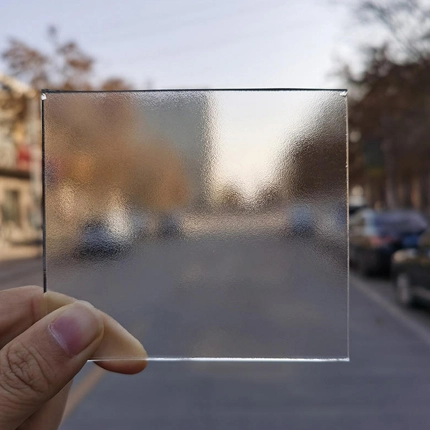
Anti-glare glass, also known as non-reflective glass or anti-reflective glass, is designed to reduce glare and reflections on the surface of the specialty cut glass, improving visibility and enhancing the overall viewing experience. Glare occurs when light reflects off the surface of the glass, causing discomfort and reducing the clarity of the transmitted image. Anti-glare glass incorporates coatings or treatments to minimize these reflections.
Light Transmission: Anti-glare glass maintains high light transmission properties while reducing glare and reflection. It allows light to pass through with minimal distortion, preserving the clarity and brightness of images viewed through the glass.
Matte Finish: Anti-glare glass often features a matte or satin-like finish on the surface, which helps to scatter and diffuse incoming light. This diffused reflection reduces the intensity of glare and minimizes distracting reflections.
High Transparency: Despite its anti-glare properties, anti-glare glass maintains high levels of transparency, allowing for clear views and optimal light penetration. The glass maintains its clarity and visibility even in applications where glare reduction is necessary.
Scratch Resistance: Depending on the specific formulation and manufacturing process, anti-glare glass may also offer scratch-resistant properties to ensure long-term durability and maintain visual clarity.
UV Protection: Some types of anti-glare glass may incorporate UV-blocking properties to protect interior spaces and displayed items from harmful UV radiation. This feature helps to prevent fading and damage to sensitive materials.
1.1 Anti-glare glass typically features coatings or treatments that reduce the surface reflectivity of the glass. Commonly used materials for these coatings include silica, silicon dioxide, or other nanoscale materials.
1.2 These coatings are designed to scatter and absorb light, reducing the amount of light that is reflected back to the viewer.
By minimizing reflections, anti-glare glass improves visibility through the glass surface. This is especially important in applications where glare reduction is critical, such as display screens, televisions, picture frames, and glass windows.
3.1 Display Screens: Anti-glare glass is commonly used in electronic devices like computer monitors, televisions, and touchscreens to enhance visibility and reduce reflections.
3.2 Picture Frames: It is used in framing to minimize reflections on framed artwork or photographs.
3.3 Windows: Anti-glare glass can be used in architectural applications, such as windows and glass facades, to reduce reflections and improve the view.
Some anti-glare glass products may also have oleophobic or hydrophobic coatings, reducing the visibility of fingerprints or watermarks on the glass surface.
In some cases, anti-glare glass may consist of multiple layers with different refractive indices to further reduce reflections. These multilayer coatings are designed to interfere with reflected light waves.
Anti-glare coatings are typically durable and resistant to scratching, ensuring that the glass maintains its anti-reflective properties over time.
7.1 While anti-glare glass significantly reduces reflections, it may not eliminate them entirely. Some level of reflection is inherent in all glass surfaces.
7.2 Cleaning: Care should be taken when cleaning anti-glare glass to avoid damaging the coatings. Manufacturers often provide specific cleaning instructions.
Anti-glare glass is widely used in various industries to enhance visibility and reduce reflections in applications where high-quality optics are essential. It is especially valuable in environments with bright lighting conditions or where minimizing glare is crucial for an optimal viewing experience.
Pls contact us if you have any inquire or questions, thank you.
No.12111, JINGSHI ROAD, LIXIA DIST, JINAN CITY, SHANDONG PROVINCE, CHINA